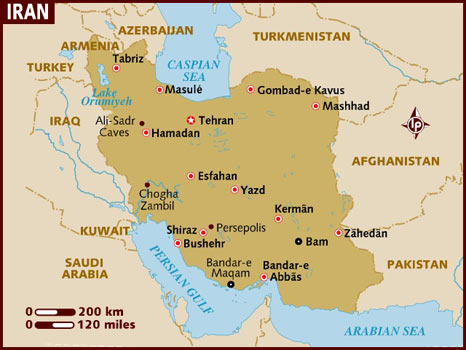Tehran’s new submarine
February 21, 2019 | Expert Insights
Iran launched a new locally made submarine capable of firing cruise missiles, state TV said, in the country’s latest show of military might, during this time of heightened tensions with the U.S.
Background
The Armed Forces of Iran include the Army, the Revolutionary Guard Corps and the Law Enforcement Force.
These forces total about 523,000 active personnel. All branches of armed forces fall under the command of the General Staff of Armed Forces. The Ministry of Defense and Armed Forces Logistics is responsible for planning logistics and funding of the armed forces and is not involved with in-the-field military operational command.
Iran's military, which is equipped with relatively modern sophisticated U.S-made military equipment delivered before 1979, has been described as the Middle East's most powerful military force by former military commanders. Iran has a robust domestic defence industry and despite long-standing sanctions, it has produced valuable military equipment and weapons systems like short-range ballistic missiles for the country.
A cruise missile is a guided missile used against terrestrial targets that remain in the atmosphere and flies the major portion of its flight path at approximately constant speed. Cruise missiles are designed to deliver a large warhead over long distances with high precision. Modern cruise missiles are capable of travelling at supersonic or high subsonic speeds, are self-navigating, and are able to fly on a non-ballistic, extremely low-altitude trajectory.

Analysis
The Iranian Navy is charged with the responsibility of forming Iran's first line of defence in the Gulf of Oman and beyond with the mission of acting as an effective blue-water navy. However, it is generally considered as a conventional green-water navy as it mostly operates at a regional level, in the Persian Gulf and the Gulf of Oman but also as far afield as the Red Sea, the Mediterranean Sea and the northwest quarter of the Indian Ocean.
The launch ceremony, led by President Hassan Rouhani, took place in the southern port city of Bandar Abbas. “Today, the Islamic Republic of Iran is fully self-reliant on land, air and sea,” Rouhani said.
“Our defensive power is meant to defend our interests and we have never sought to attack any country,” he added. Named the Fateh (Farsi for Conqueror), Fars said the new submarine is Iran’s first in the semi-heavy category, filling a gap between the light Ghadir class and the heavy Kilo-class submarines that the country possesses.
Fars said the near 600-ton underwater vessel is equipped with torpedoes and naval mines in addition to cruise missiles and can operate more than 200 meters below sea level for up to 35 days.
The U.S. withdrew from a 2015 multilateral nuclear deal with Iran in May 2018 and re-imposed biting unilateral sanctions later last year. Iran’s Revolutionary Guards unveiled a new ballistic missile with a range of 1,000 kilometres (620 miles) on February 7th, according to the elite unit’s official media agency Sepah News.
The surface-to-surface missile — called Dezful — is an upgrade on the older Zolfaghar model that had a range of 700 kilometres, aerospace commander Brig. Gen. Amirali Hajizadeh said. Rouhani said that “pressure by enemies, the (Iran-Iraq) war and sanctions” were incentives for Tehran to be self-reliant in its defence industry. “Maybe we would not have this motivation to industrialise our defence sector,” he said if Iran could just buy the weaponry it needed.
Iran’s top military brass and Cabinet ministers attended the ceremony.
Assessment
Our assessment is that Iran’s latest submarine is a major step in the country’s domestic defence manufacturing capabilities. We believe that the ability of the submarine to launch mines and ballistic missiles will give the under-equipped Iranian navy some teeth while also alerting Washington over the potential threat it poses to American warships in the region.








Comments